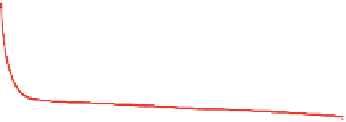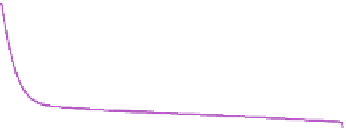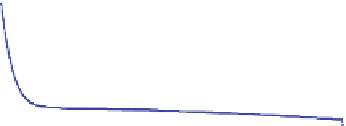Environmental Engineering Reference
In-Depth Information
Fig. 20 a DSC cyclic curves
of the pure FC-72 and FC-72
nanoemulsion fluids. b the
measured and calculated heat
capacity of the water in FC 72
nanoemulsion fluids. The
dispersed water droplets
remain in liquid phase during
operation [
44
]
(a)
0.5
0.25
Pure FC 72
3 vol.% water in FC72
6 vol% water in FC72
9 vol% water in FC72
12 vol% water in FC72
0
-0.25
-0.5
0
10
20
30
40
50
Temperature (
0
C)
(b)
20
Calculated
Measured
15
10
5
0
0
2
4
6
8
10
12
14
Volumetric Fraction of Water (%)
shown in Fig.
20
. It can be seen that over 15 % increase in heat capacity can be
achieved for a water volumetric fraction of 12 %.
In contrast with single-phase water droplets, the solid-liquid phase change of
these droplets will significantly enhance the effective specific heat of the nano-
emulsion fluids. The effective specific heat of the nanoemulsion fluid will be
increased by a factor of 1
þ
a
H
water
DT
C
FC72
, where a is the water volume fraction, H
water
is
the latent heat of fusion of water per unit volume, and DT is the temperature
difference between the heat transfer surface and the bulk fluid. The heat of fusion
H
water
of pure water is 334 J/ml. The measured a
H
water
values of the water in FC-
72 nanoemulsions for water loadings of 3, 6, 9, and 12 vol% are 10.52, 15.44,
25.48, 39.78 J/ml, respectively, as shown in Fig.
21
a and b. The effective heat
















































































































































































































































Search WWH ::

Custom Search